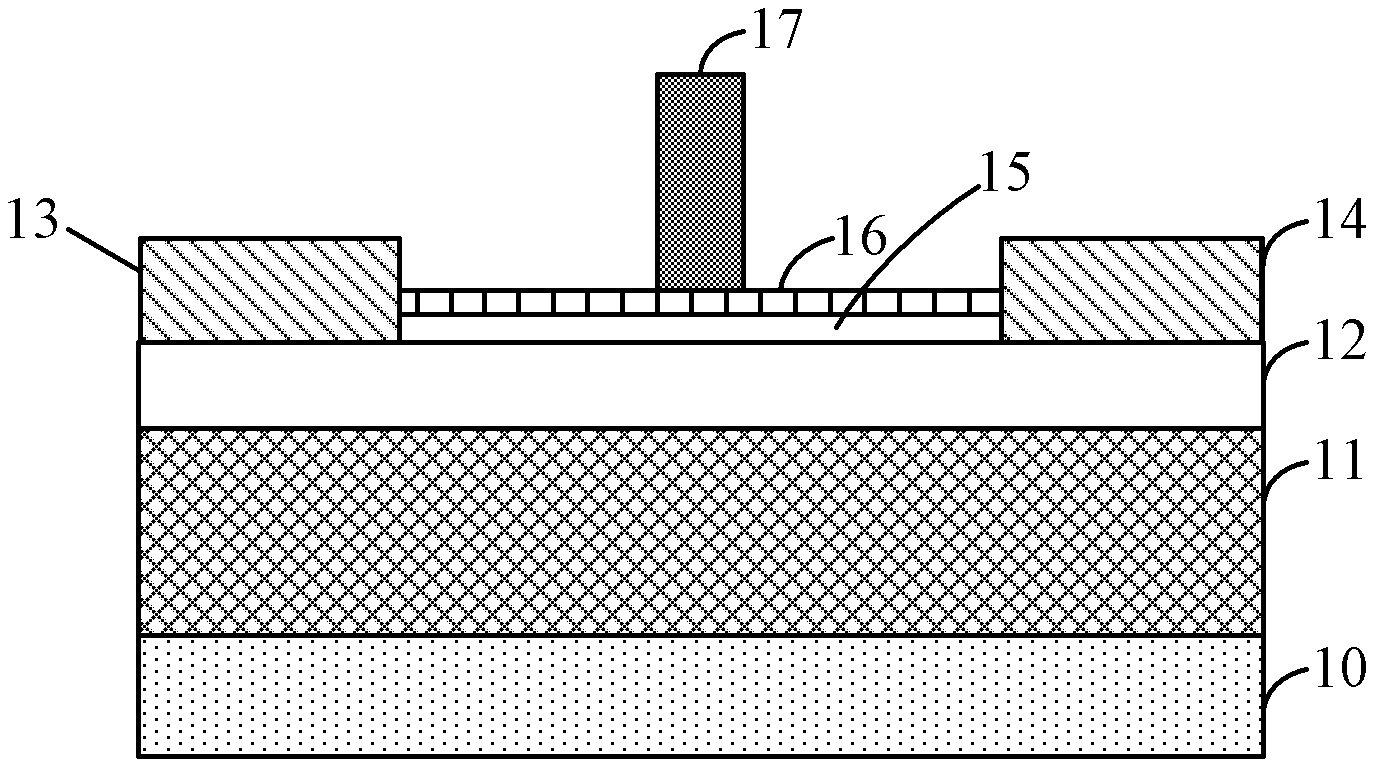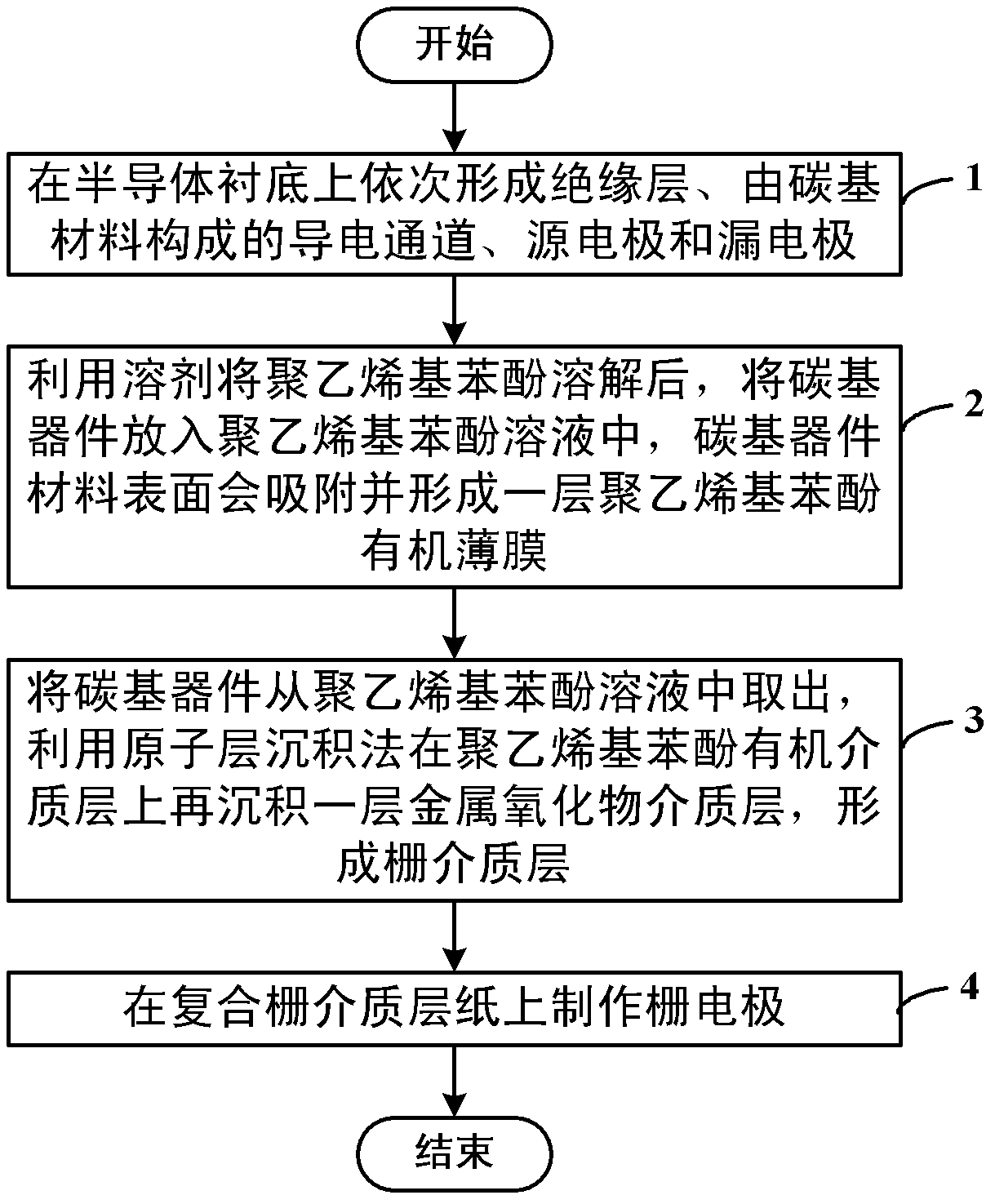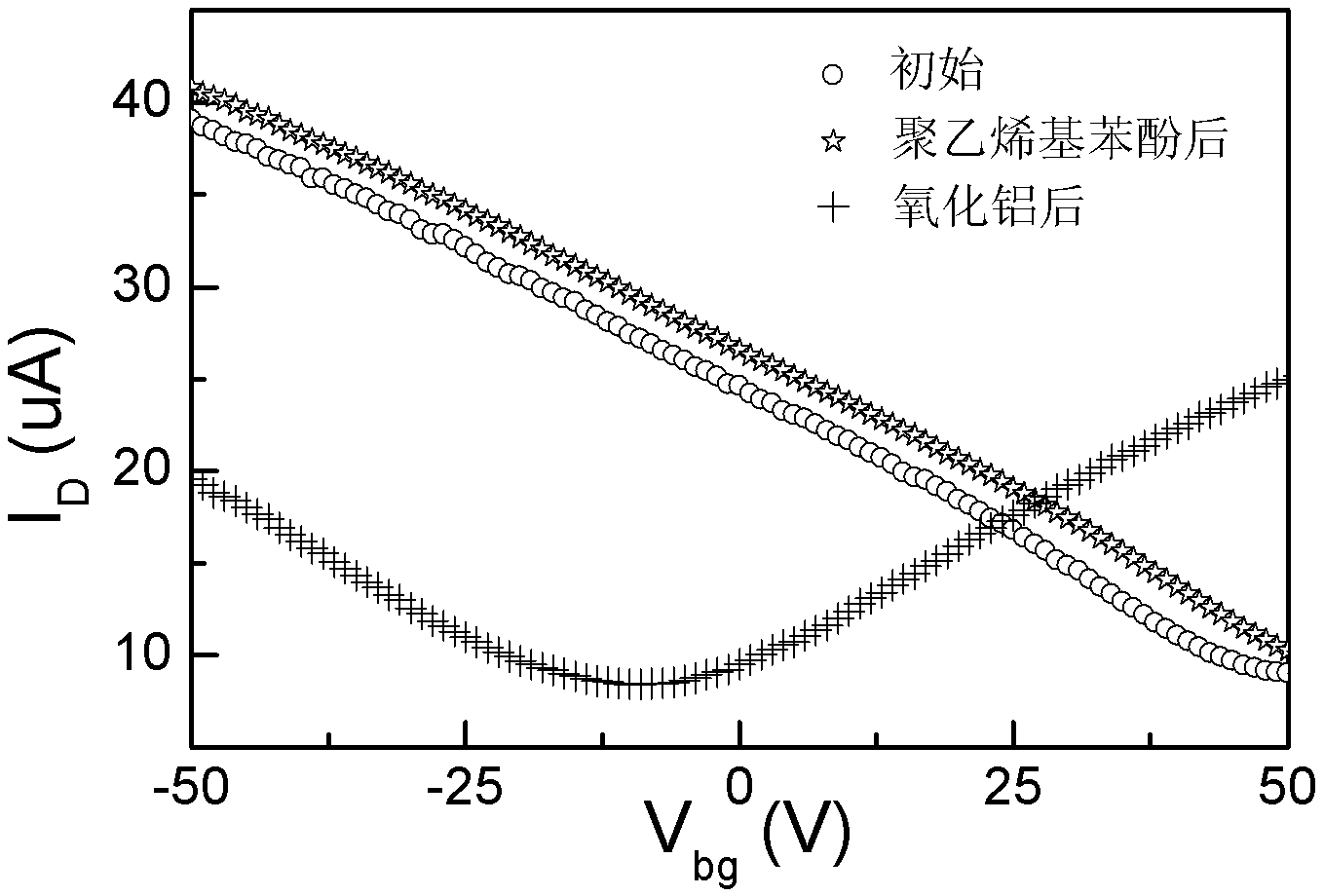Carbon-based field effect transistor and preparing method thereof
A technology of transistor and carbon base field, which is applied in the field of nanoelectronics, can solve the problems of reducing carrier mobility and device performance degradation, and achieves the effects of good reliability and repeatability, low cost and simple preparation process
- Summary
- Abstract
- Description
- Claims
- Application Information
AI Technical Summary
Problems solved by technology
Method used
Image
Examples
Embodiment 1
[0040] Example 1: Graphene is used as the conductive channel, metal titanium / gold is used as the source-drain electrode, polyvinylphenol organic dielectric layer and atomic layer deposited hafnium oxide are used as the composite gate dielectric layer, and metal nickel / gold is used as graphite for the gate electrode ene field effect transistor.
[0041] Concrete preparation steps are as follows:
[0042]Step 1: On the graphene material on the 100nm silicon dioxide / bulk silicon substrate sheet, after forming the source-drain electrode shape by electron beam lithography, electron beam evaporates a layer of 10nm / 50nm thick titanium / gold (Ti / Au= 10 / 50nm) metal as the source-drain electrode, and then put the sample into acetone to peel off, remove the unnecessary metal layer, and obtain the source-drain metal electrode;
[0043] Step 2: Prepare polyvinyl phenol solution, dissolve polyvinyl phenol in propylene glycol methyl ether acetate to form a polyvinyl phenol solution, then soa...
Embodiment 2
[0046] Example 2: Using carbon nanotubes as the conductive channel, using metal titanium / gold as the source and drain electrodes, using polyvinylphenol organic dielectric layer and atomic layer deposition hafnium oxide as the gate composite dielectric layer, and metal nickel / gold as the gate electrode Graphene Field Effect Transistor.
[0047] The specific steps are similar to Example 1, but carbon nanotubes are used as conductive channels.
Embodiment 3
[0048] Embodiment 3: a graphene field effect transistor with metal titanium / gold as the source and drain electrodes, polyvinylphenol organic dielectric layer and atomic layer deposition hafnium oxide as the gate compound dielectric layer, and metal nickel / gold as the gate electrode.
[0049] The specific steps are similar to Example 1, but in Step 2, polyvinylphenol is dissolved in deionized water to form a polyvinylphenol solution.
PUM
 Login to View More
Login to View More Abstract
Description
Claims
Application Information
 Login to View More
Login to View More - R&D
- Intellectual Property
- Life Sciences
- Materials
- Tech Scout
- Unparalleled Data Quality
- Higher Quality Content
- 60% Fewer Hallucinations
Browse by: Latest US Patents, China's latest patents, Technical Efficacy Thesaurus, Application Domain, Technology Topic, Popular Technical Reports.
© 2025 PatSnap. All rights reserved.Legal|Privacy policy|Modern Slavery Act Transparency Statement|Sitemap|About US| Contact US: help@patsnap.com



